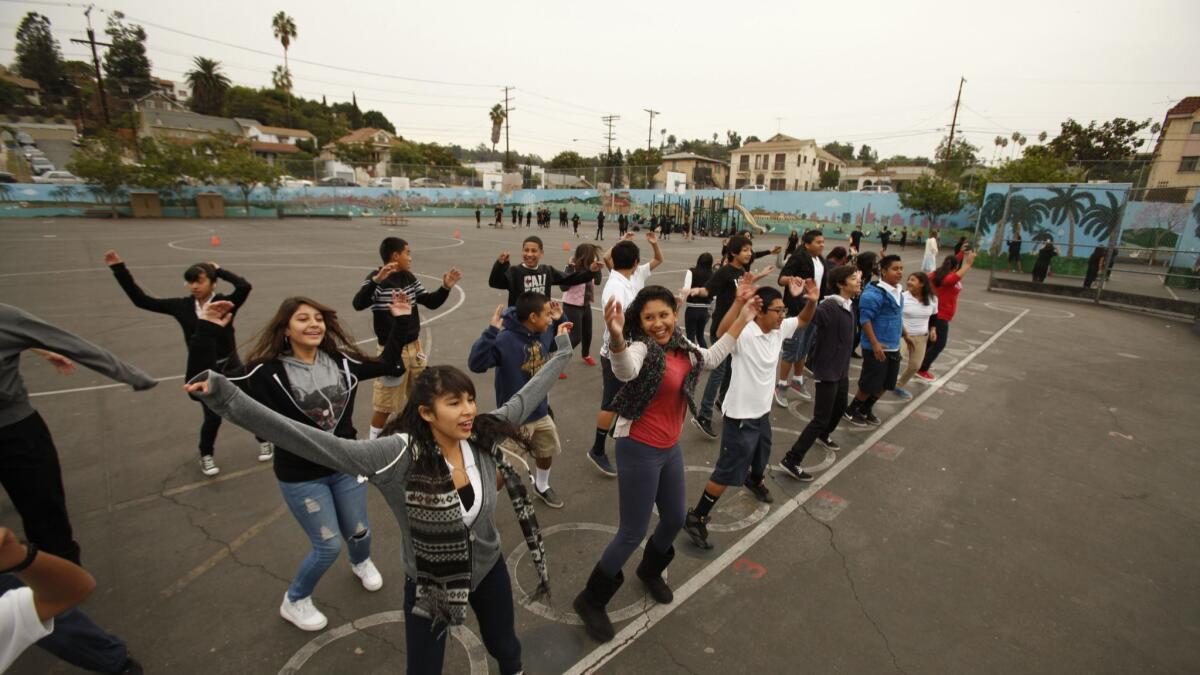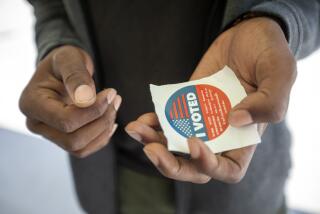Editorial: Today is the end of a voting era in Los Angeles County

- Share via
When I head down to Logan Elementary School this morning to cast my vote in the general election, I must remember to take a good look around. This neighborhood school has been my main polling site for more than a decade. But it will probably be the last time I cast a vote here.
In fact, everyone who votes Tuesday at one of Los Angeles County’s 4,800 election day neighborhood polling stations should be prepared to say goodbye to the place. Most will close for good after this election, as the county prepares for a major update of its voting processes in time for the March 2020 presidential primary as part of the state’s 2016 Voter’s Choice Act.
Voting in Los Angeles County has changed little in the past 50 years. The only significant change was to replace punch cards with ink-marked cards. So the next election is bound to be a bit jarring. Virtually everything about in-person voting will be different. Instead of thousands of polling stations opening at 7 a.m. in school auditoriums, community center common rooms, fast-food restaurant lobbies, retail display rooms and other locations, there will be 200 to 300 strategically located one-stop vote centers opening 10 days before the election, increasing to at least 1,000 for the final four days of voting.
For me, voting is associated with people and places, and some of the places have been odd.
Voters will no longer be tied to one specific neighborhood polling place on one particular day; they will be allowed to show up at any of the county’s voting centers on any day they are open. There may even be pop-up voting centers at farmer’s markets and other places where people congregate for short periods of time.
Even the county’s odd InkaVote contraption will be gone, replaced with sleek touch-screen set-ups that allow voters to enter their selections in newly designed voting stations (no more narrow, rickety privacy booths) or to download their selections from a smart phone, then print out a completed ballot.
It is expected to be an altogether improved voting experience — efficient, convenient and cost-effective.
So why do I feel a little melancholy about it?
I guess it’s because the new system sounds impersonal, the civic engagement version of a big box store that’s automated to the point that you can be in and out with little or no human interaction. That’s fine for buying groceries, but casting a vote feels more satisfying to me when I recognize my neighbors and there’s a little bit of a line and some effort required to remind me that I’m participating in a sacred democratic act with millions of other people. It’s why I’ve never switched to mail voting. Filling out a form on the couch doesn’t deliver the same sense of accomplishment as marking up a ballot standing with my fellow citizens. There’s something cathartic, too, about punctuating each vote with firm thrust of the ink pen, something you just can’t replicate on a touch screen.
Enter the Fray: First takes on the news of the minute from L.A. Times Opinion »
For me, voting is associated with people and places, and some of the places have been odd: a two-car garage at a private home in Riverside festooned with American flags; a lighting store in West Los Angeles; a tiny cafe in Echo Park that squeezed a few voting booths between the bar and tables. I seem to remember casting my first-ever ballot in a church basement in San Francisco. But I can’t promise that’s correct. It was a long time ago, and I was more interested in participating in my first election than in my surroundings.
There were times when I was the only person at a polling station. Other times, I had to wait for an open booth, giving me time to chat with the always-friendly poll workers, say hi to neighbors and pat their dogs. In November 2008, the line outside the school was so long a friend had time to make a sandwich run. Yet the people queuing up were so excited to take part in what would be a historic election of the first black U.S. president that I heard no grousing about the wait.
It’s possible my neighborhood school will be selected as a one-stop voting center in March 2020. It’s a fairly big space, centrally located and just a block away from a major transit corridor. But that doesn’t mean it will be the same, or that I will be back. Not with so many other convenient options. That’s good for democracy, I know, but maybe not great for the memories.
— Mariel Garza
Follow the Opinion section on Twitter @latimesopinion and Facebook
More to Read
A cure for the common opinion
Get thought-provoking perspectives with our weekly newsletter.
You may occasionally receive promotional content from the Los Angeles Times.










